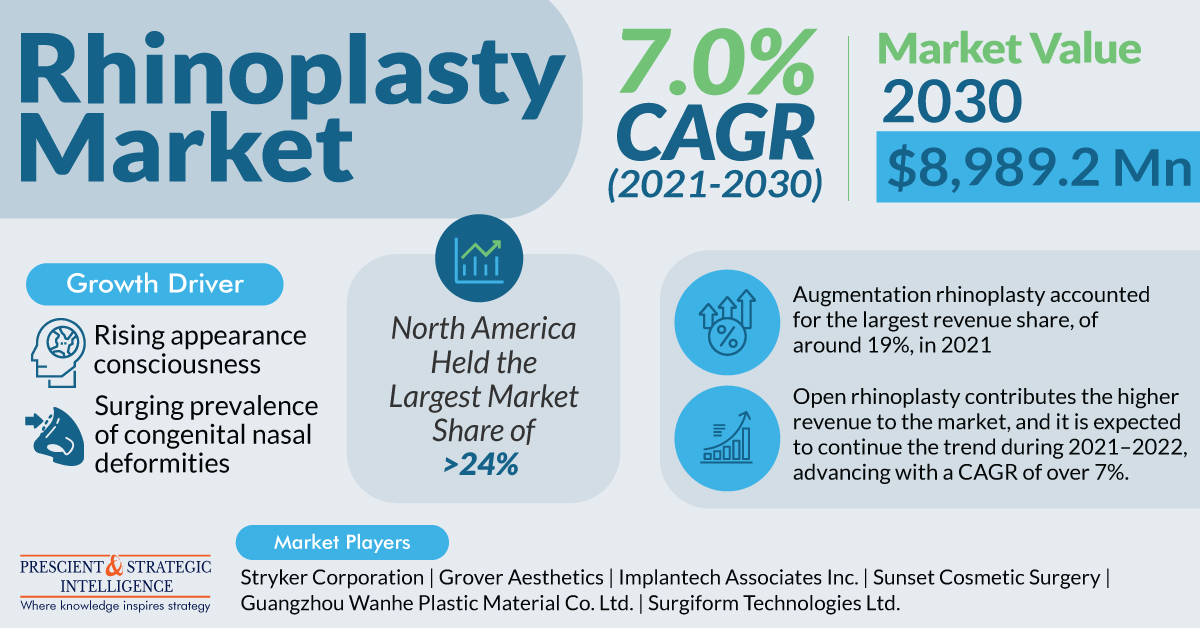In age reversal surgery, reshaping the nose has become popular to address common problems such as a droopy nose tip, uneven cartilage, and/or structurally supporting the nasal bridge to prevent or treat sagging. The term "rhinoplasty" is a type of facial cosmetic surgery where the nose's structure and shape are modified.
Rhinoplasty alters the form of the nose by removing or adding implanting synthetic material, cartilage or bone or using procedures including tissue grafting from other body parts.
The rhinoplasty market is set to produce $8,989.2 million by 2030. This is credited to the growing awareness of aesthetics, surging consumer spending's inclination toward appearance, and rising disposable income in emerging economies, such as India and China.
Categories of Rhinoplasty Technique
Two rhinoplasty procedures are based on technique: open rhinoplasty and closed rhinoplasty.
For a significant remodeling of the nose, open rhinoplasty is utilized. This market segment produces the most revenue, and it is anticipated that this trend will continue.
This can be attributed to the rise in nose reshaping cases and surgeons' preference for this technique due to its high visibility and accessibility during long, sophisticated nasal procedures.
Liquid rhinoplasty Is Becoming More Popular
Since nose jobs require anesthesia, many people choose liquid rhinoplasty to skip anesthesia and the drawn-out procedure time. At cosmetic surgery offices, this non-surgical process may be finished in 15 to 20 minutes.
Injecting fillers during the treatment gives the nose's tip, bridge, or other places a little but noticeable improvement. These six to twelve-month-long filler operations can result in immediate changes.
Growing Aesthetics Interest Will Increase Demand for Rhinoplasty
Globally, teens and adults are becoming increasingly sensitive about their appearance, which is one of the key factors driving market expansion. The need for surgical and filler nose operations has increased due to some aesthetic traditions being altered by the advent of diversity in emerging countries.
Additionally, the disclosure of these procedures by stars significantly affects public perceptions of attractiveness. These cosmetic procedures, both non-invasive and surgical, are becoming increasingly popular.
Women seek cosmetic operations as the idea of the ideal beauty becomes increasingly improbable, which increases market demand. As per the report, working woman are spending more money on their beauty.
Additionally, people have developed a keen interest in medical aesthetics due to worries over appearance. People between the ages of 25 and 65 frequently choose different cosmetic operations because of societal pressure to keep a pleasing face and physical appearance.





Comments